- News
- Reviews
- Bikes
- Components
- Bar tape & grips
- Bottom brackets
- Brake & gear cables
- Brake & STI levers
- Brake pads & spares
- Brakes
- Cassettes & freewheels
- Chains
- Chainsets & chainrings
- Derailleurs - front
- Derailleurs - rear
- Forks
- Gear levers & shifters
- Groupsets
- Handlebars & extensions
- Headsets
- Hubs
- Inner tubes
- Pedals
- Quick releases & skewers
- Saddles
- Seatposts
- Stems
- Wheels
- Tyres
- Tubeless valves
- Accessories
- Accessories - misc
- Computer mounts
- Bags
- Bar ends
- Bike bags & cases
- Bottle cages
- Bottles
- Cameras
- Car racks
- Child seats
- Computers
- Glasses
- GPS units
- Helmets
- Lights - front
- Lights - rear
- Lights - sets
- Locks
- Mirrors
- Mudguards
- Racks
- Pumps & CO2 inflators
- Puncture kits
- Reflectives
- Smart watches
- Stands and racks
- Trailers
- Clothing
- Health, fitness and nutrition
- Tools and workshop
- Miscellaneous
- Buyers Guides
- Features
- Forum
- Recommends
- Podcast
 2021 Specialized Diverge Expert Carbon - riding 3.jpg
2021 Specialized Diverge Expert Carbon - riding 3.jpgDiscovering cycling in your 40s - how to unlock the talents you never knew you had
It’s never too late to get into cycling, to have fun and get fit, but there are some things to bear in mind if you are just picking up the sport at 40+ without much fitness or riding experience. Here’s the best approach for both improving your fitness and avoiding injury as you get addicted to the in-the-saddle way of life.
For this expert advice, we spoke to ABCC Level 3 accredited cycle coach Steve Harrop of Skyhook Coaching Services and Physiotherapist Dan Boyd of Complete Physio.
If you are 40+ and you’ve already racked up some miles in the saddle, check out our guide over here for maintaining and maximising your fitness as you approach middle age. There's advice on which areas of your fitness are in decline and are really worth targeting.
Protect your hips
“The statistics for hip impingements and unfortunately hip arthritis start to creep up quite considerably over the age of 40,” Dan notes. “It’s important to have some awareness of conditioning and you should also make sure that your hip angle is not going below 90 degrees on your pedal stroke.”
For this your saddle height needs to be correct, Dan explains. “In the bottom dead centre position, when you put your foot down at the bottom of the pedal stroke, your knee at that position should be at about 140 degrees.
“You use your quads, hamstrings and glutes pretty much at the most efficient point at that position and it also prevents your hip from coming up too high.
As well as your bike position, some stretching also helps.
“If I could scream and shout, or just recommend one exercise everybody should do it’s to stretch your hip flexors, especially exercises that target your psoas and tensor fascia latae (TFL),” Dan says.
“We all sit down too much in modern life. We are meant to be standing up and moving around a lot more than we are actually doing. That’s true of everybody, pretty much. Stretching your hip flexors and making sure they’re not too tight is really important.”
Here’s a video demonstrating the kneeling hip flexor stretch Dan recommends holding for 30 seconds.
Increase things gradually
“Progression is key,” says Dan. “When people are taking up any sport, including cycling, for the first time, it’s easy to do too much too soon.”
It’s important to up the volume gradually. Steve recommends: “Increase things by no more than 10% each week. That could be distance or time in the saddle. This a general rule of thumb that’s used to limit people overdoing it too soon.”
“Consecutive days in the beginning are also really tough so I’d recommend switching between hard days and recovery rides to start with.”
Condition your body for riding
Susceptibility to injury increases as you age, and this is why Dan recommends building up your time in the saddle gradually.
Alongside hip issues, Dan notes the most common injuries are:
Ilio-tibial band (ITB) friction syndrome
“The reason is because of the amount of repetitive knee flexion you do and if you haven’t done much cycling before you are just not conditioned for it. Doing too much too soon usually causes lateral knee pain.”
Shoulder neck pain
“In the bike position you hold your head upwards and forwards, and this can quite quickly cause tight shoulders and you’ll end up returning from a ride feeling quite sore. This is generally a positioning issue, but conditioning and core stability work are also important. We’re not used to being in that position, especially for a long time.”
Working on conditioning your body and developing your core stability is worthwhile to ensure you enjoy riding your bike for longer.
What’s good to hear is that every time you ride you will already be doing some good, as long as you increase the length and duration of your rides gradually…
“The muscle that stabilises you on the bike is the transabdominal,” Dan says. “Anytime you are perched on a saddle it gets working; the more time you spend in the saddle, the more core stability you develop”.
Conditioning comes along with endurance on the bike, Dan notes. “As well as building up time on the bike, it’s best practice to complement this with core stability exercises off the bike.”
Dan recommends doing 15 reps of the following exercises. Click on the exercise for a demonstration video:
- Bulgarian split squats
- Bosu Squat Dome
- Lunges onto a wobble board
- Stability ball plank twist with kick
Dan adds: “The last one is a tough one but so good for your stability and form on the bike.”
Dial your bike position
While there are positional set-up changes you can make to your bike after you’ve bought it, as well as components you can swap out, if you’re lacking flexibility it’s best to go for a frame with more relaxed endurance geometry rather than a thoroughbred race bike.
> Check out our guide to buying your first road bike over here.
Endurance geometry puts you into a more upright, less extended or aggressive position, which can be a lot more comfortable for you to hold. It’ll also be a more stable position which can help you feel more in control when tackling corners and descents.
> Your complete guide to buying a second-hand bike
You’ll enjoy riding a lot more, and perform better, if you have a comfy set-up, and it’ll also prevent injury.
If you’re looking to make your existing bike setup more comfortable, here’s our guide with simple tweaks including tips related to saddles, handlebars, brake reach, cleat positioning, and more.
It can still be difficult to get all of these working in harmony for a setup that is comfortable for you. Seeking out professional help from a bike fitter can be a worthwhile investment, especially as you get older.
Your ligaments and joints start to decondition past 30 so you’re more likely to have problems that last for longer.
> Should you get a bike fit? The 9 pitfalls to avoid
Switch to easier gearing
It’s important to make sure the gearing you’ve got is also appropriate. Some bikes don’t come specced with gearing that's suitable for your local terrain and your fitness level.
“Inappropriate gearing is going to affect your knees as well as your confidence,” Steve says. “If you have to get off your bike and push it up a hill, that doesn’t feel great. But it’s not necessarily down to your fitness level, you may find you are able to get up it if you have easier gears.”
Even if you do not live in a hugely hilly area such as the Peak District or Lake District, most areas of the UK have plenty of climbs and sometimes steep ones.
> 10 top tips to get faster up hills
A compact crankset is 50/34t – the outer chainring has 50 teeth and the inner chainring has 34 teeth – and is specced on most road bikes these days. More race-focused road bikes might have a semi-compact 52/36t crankset or even a 53/39t, but that's increasingly uncommon. The cassette that most Shimano sponsored pros use is an 11-28t 11-speed cassette, and these are fairly commonly specced on the road bikes we buy.
A 34x28 bottom gear isn’t particularly low; you might well be better off with an 11-32t cassette for a bottom gear which is much more friendly. You do get larger jumps between some of the gears with an 11-32t cassette, so there is a bit of a trade-off there. But unless you’re very particular about the cadence you turn, you shouldn’t have an issue with 11-32t for just general riding and you’ll be grateful whenever the road ramps up.
> Beginner’s guide: understanding gearing
Then when you do have the right setup, remember to use your gears fully and avoid grinding up a climb in a big gear as this can put unwanted stress through your knees.
Work on your riding skills as well as fitness
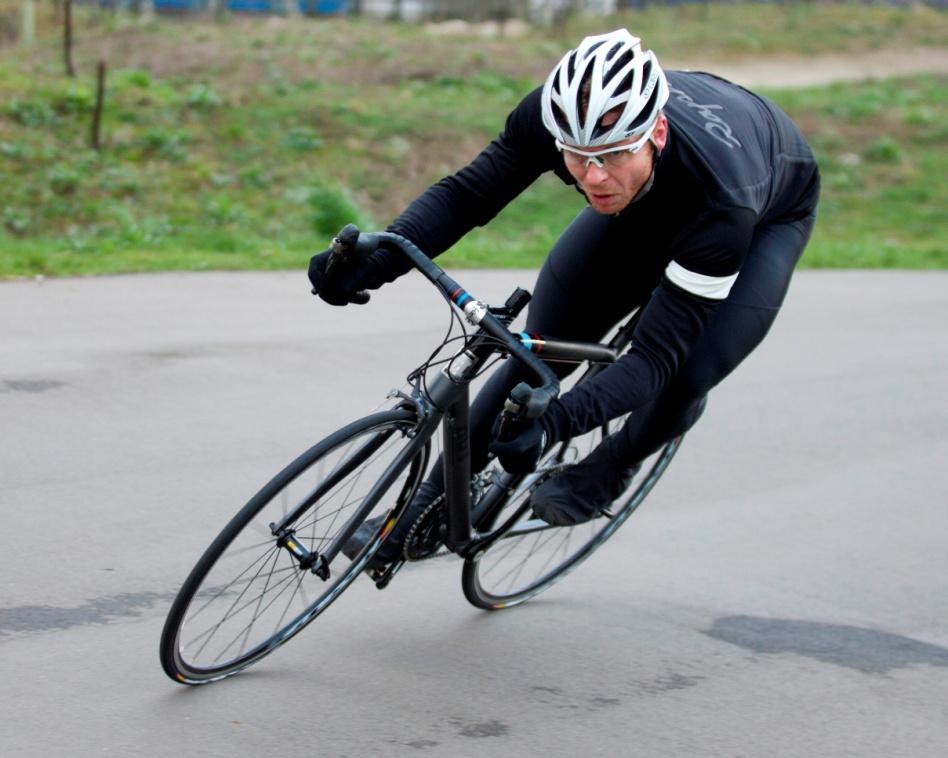
As you gradually up the intensity and duration as your body conditions itself to the riding motion and position, it’s a great time to devote some of your energy and concentration to your technical riding skills.
By developing your riding skills, you’ll not only go faster but you’ll stay safer and be in control.
First, there’s the terrain to tackle. Here are our guides on:
Then there’s also the weather conditions to deal with, check out these guides:
Invest in some clipless pedals and cycling shoes. Two bolt shoes are a good choice to begin with, and they are also used in gravel riding as the shoes have extra tread.
If you want to maximise your performance on the road then you might want to progress to larger three-bolt cleats that sit proud of your sole – but beware that they're not so good for walking in.
Learn the best technique for clipping in and out in our video 'how' to over here.
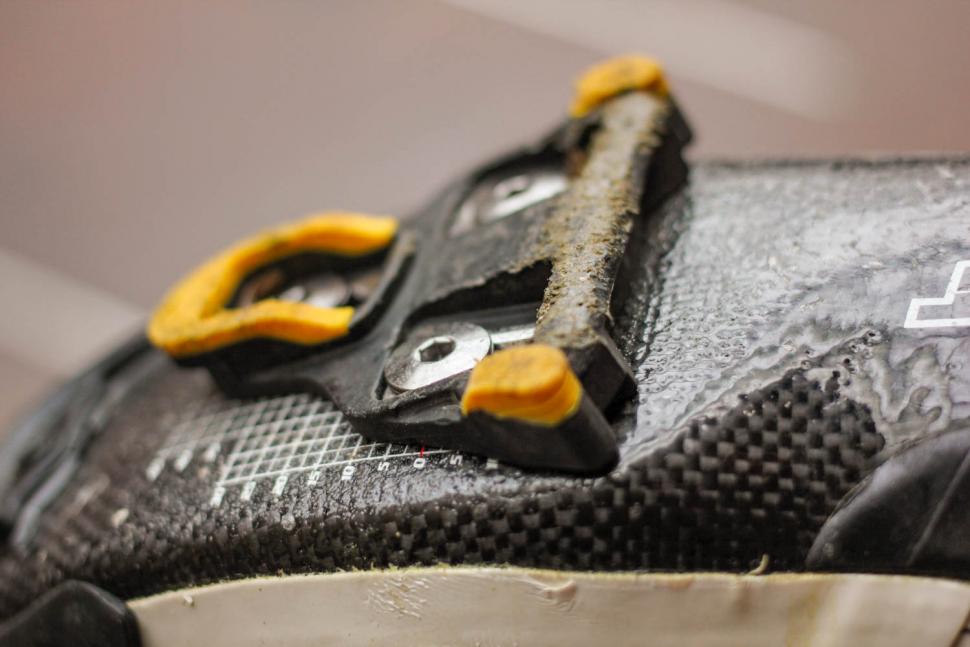
With all these skills, start by focusing on your technique during recovery or endurance rides at slower speeds and then as you improve transfer this experience to higher speeds.
Set yourself a goal even if it’s not an event or race
“Having an end goal in mind, with steps along the way so you can see you’re making progress, is really important,” Steve says. It can keep you focused and it’s very encouraging to be able to see the improvements you’re making.
“It might be to get up a local hill in five minutes instead of 10 minutes, or to improve your time around a 20-mile local loop— it can be anything.
“If you know what you’re aiming for, you’ll know when you’ve got there.”
Steve recommends breaking your goal down. “Sometimes a journey can be quite mind blowing when you’re right at the beginning but by breaking it down into small manageable steps you can tick parts off. Yes, I’ve achieved that, and that helps with motivation.”
It’s also important that the goal itself is realistic as well as the timeframe.
Training platforms such as Strava have features in place to help you set goals to stay on track with your fitness and to challenge yourself. You can set weekly or annual goals for distance or number of hours in the saddle, as well as more specific targets for sections of road, which Strava calls segments. These can be uphill, flat or even downhill sections, and the distances of these vary too.
> 8 things you didn’t know about Strava — advanced features for exploring and performance analysis
Strava also has a personal heatmap feature that visually displays the roads you have ridden before. You can see how many roads you’ve conquered and can use the map to discover and explore even more areas.
Don’t underfuel on riding days
It’s quite easy to get distracted by the ride and forget to eat or drink anything. It’s important to get into the habit of fuelling from the start so it becomes second nature when riding.
> Reviews of energy and recovery bars
If you’re picking up cycling for losing weight, Steve stresses that it’s still really important to stay fuelled and hydrated when cycling.
“If you’re looking to optimise weight and shrug off some kilos, my advice is that you diet on the days you’re not training or riding.
“You need to fuel the training—having sufficient carbohydrates before and during, and protein afterwards—for optimal benefits.
“The last thing you want to be doing is having hypoglycaemic episodes or bonking on the way home.”
> Lose weight cycling: find out why intense efforts are better
You’ll still gradually lose weight by exercising as your base metabolic rate increases, so don’t underfuel on riding days.
Recover hard
“It’s key to make sure you’re giving your body sufficient time to recover between exertions,” Steve says. “As you get older it just takes the body that little bit longer to come back post-exercise.”
This means that your recovery days should be very easy. “If you’re doing a recovery ride it should short, and intensity-wise it should only be a little bit more than sitting in front of the TV,” Steve advises.
As a result of muscle loss as you get older, it’s also even more important to make sure you’re absorbing sufficient protein post-ride.
Added to this, Steve recommends using a foam roller to stretch out the muscles after the stresses you’ve put them through during training.
“I’ve noticed this helps particularly with older riders as the muscles aren’t quite as elastic as they were when you’re younger, and so using a foam roller can really help you feel fresh to ride again sooner.”
For more tips check out our guide for maximising your recovery here.
Enjoy...
Most importantly of all, have a blast. It’s never too late to have fun while getting fit.
If you’re looking for more guidance as well as some mates to explore the countryside with, try finding a local group or club. There’ll be café stops for coffee and cake nomming mid- or post-ride, and other riders will be happy to share advice.
In the meantime, lots of road.cc readers discovered - or rediscovered - cycling in your 40s and here’s what you wish you’d known when you started…
Sam3 says: “ wish I had known earlier about the value of investing in good quality equipment. [It] makes the hobby more fun, less hassle, and eases your path to getting fitter.”
Nigel Garrage says: “Just have some fun and try out loads of different routes.”
hawkinspeter says: “I wish I'd discovered bib shorts/tights earlier as they're so much more comfortable than non-bib [waist] ones and you don't get a cold gap if your top rides up a bit.”
TheBillder says: “Finding a good group or club really helps and it's not as intimidating as you might think in the slow group.”
brooksby says: “Cycling on the road is really not that scary!”
andystow says: “The biggest thing I wish I'd realised earlier is how easy and fast it can become. I'd hear some guys I knew talking at the pub on Fridays about a planned 20 or 25-mile ride on Saturday, and I just didn't think that was something I'd be able to do. Now I know that's well under two hours.”
Jigzy99 says: “My advice is not to scrimp on kit – for you or the bike. Buy good quality tyres, bib shorts, shoes, jacket and helmet.”
BobGently says: “Local clubs are a font of advice and encouragement. I can't recommend them highly enough to new riders. When the sky is grey and there's the prospect of a lie-in, it can be hard to motivate yourself, but a commitment to join the crew for a ride helps to keep the motivation going.”
Inicholson says: “Buy a bike from a proper LBS [local bike shop], not a chain [and] get it serviced regularly (by a proper LBS or mechanic, not a chain)."
Anna has been hooked on bikes ever since her youthful beginnings at Hillingdon Cycle Circuit. As an avid road and track racer, she reached the heady heights of a ProCyclingStats profile before leaving for university. Having now completed an MA in Multimedia Journalism, she’s hoping to add some (more successful) results. Although her greatest wish is for the broader acceptance of wearing funky cycling socks over the top of leg warmers.
Latest Comments
- chrisonabike 1 sec ago
Is it "theoretically foldable" or do you have to prove it?...
- chrisonabike 45 min 15 sec ago
Is this another effort from the folks who wanted to have cyclists riding on bridges (tubes?) above the rail lines?
- EK Spinner 46 min 29 sec ago
even if they do cover all the physical losses, it will take months to re-fit and re-stock the shop, and all with zero income in the meantime.
- Born_peddling 1 hour 10 min ago
And if you're at least local or can afford rental prices in bath for the time you'll be required for 🤷♂️
- Joe579 1 hour 25 min ago
It’s a spoof/parody/humour page.
- Pura Velo 1 hour 41 min ago
A shame to see a long standing name from the custom wheel building community fall victim to the industries woes. ...
- BikingBud 2 hours 46 sec ago
They were trying to avoid the overhanging windows!! Seems like somebody else has scraped the top of the wall before.
- JMcL_Ireland 2 hours 22 min ago
Simplicity goes a long way. Means testing will make it expensive to administer and ultimately defeats the purpose in the same way that the...
- StevenCrook 2 hours 32 min ago
But only if the police recover it. Once it's been sold on? The chances of that are vanishingly small....
- Bigfoz 1 hour 55 min ago
With WBD having taken Discovery+ sports behind a significant paywall (Cycling, SPorts cars, Superbikes, MotoGP, British Superbikes etc etc)...
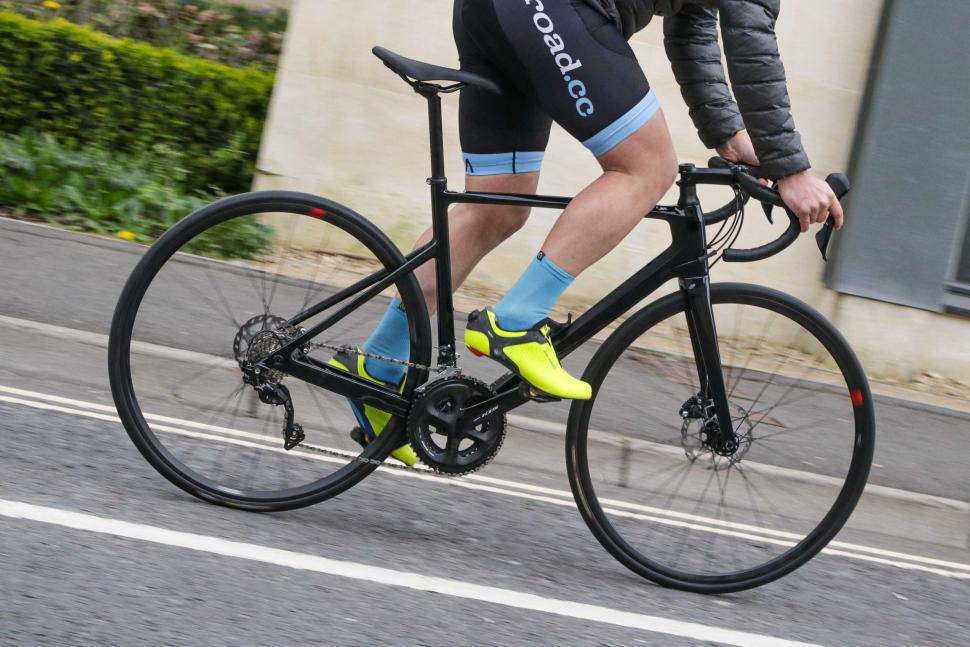
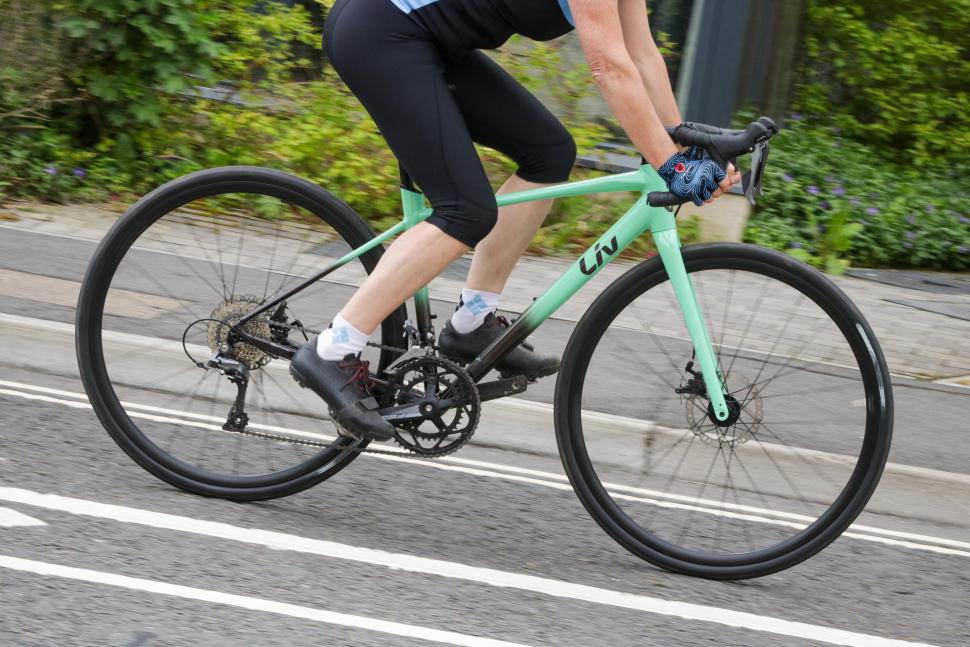
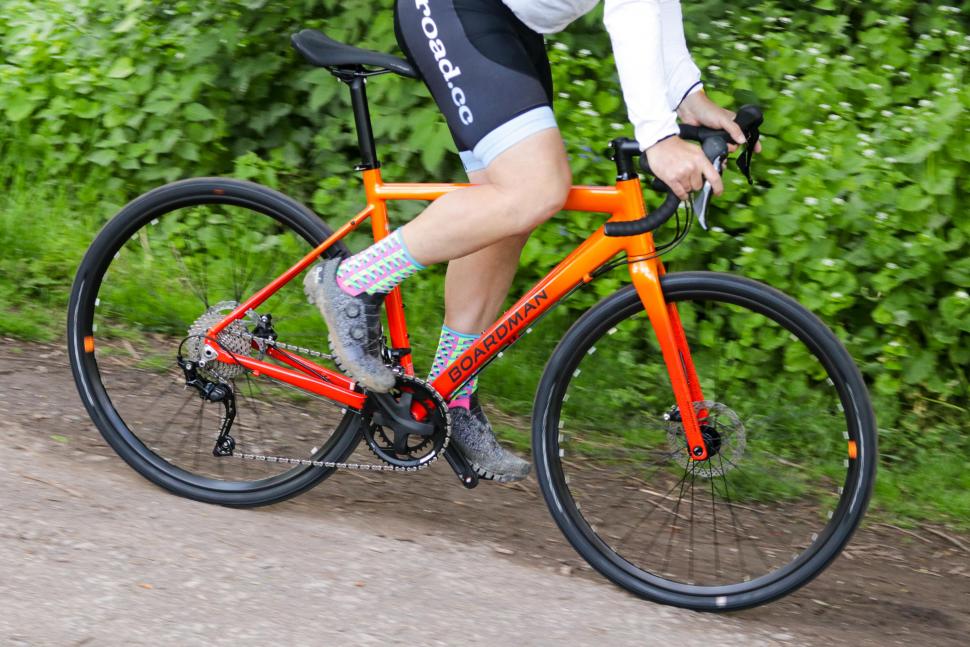
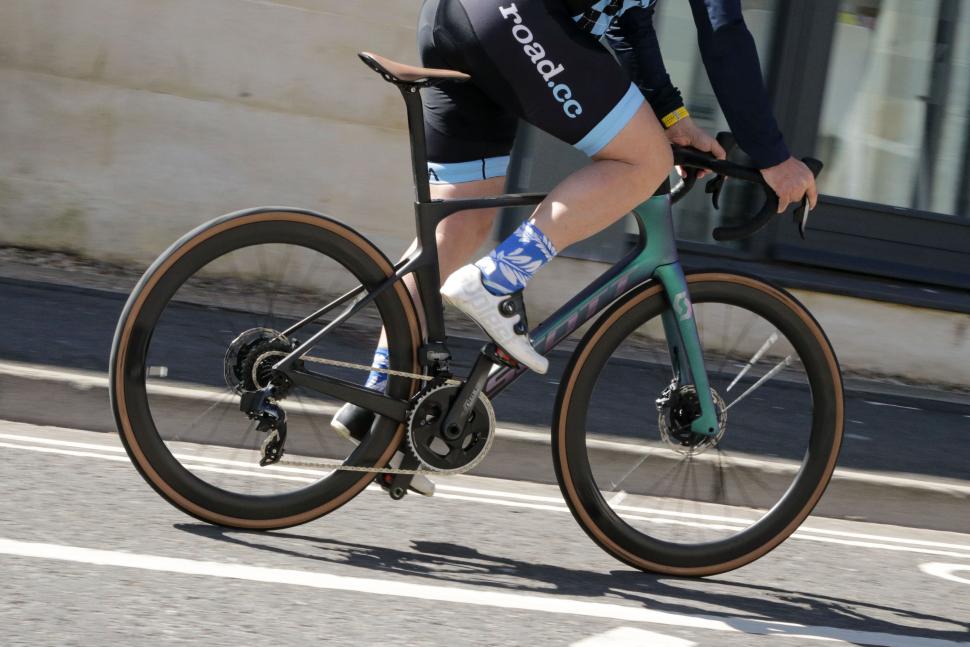
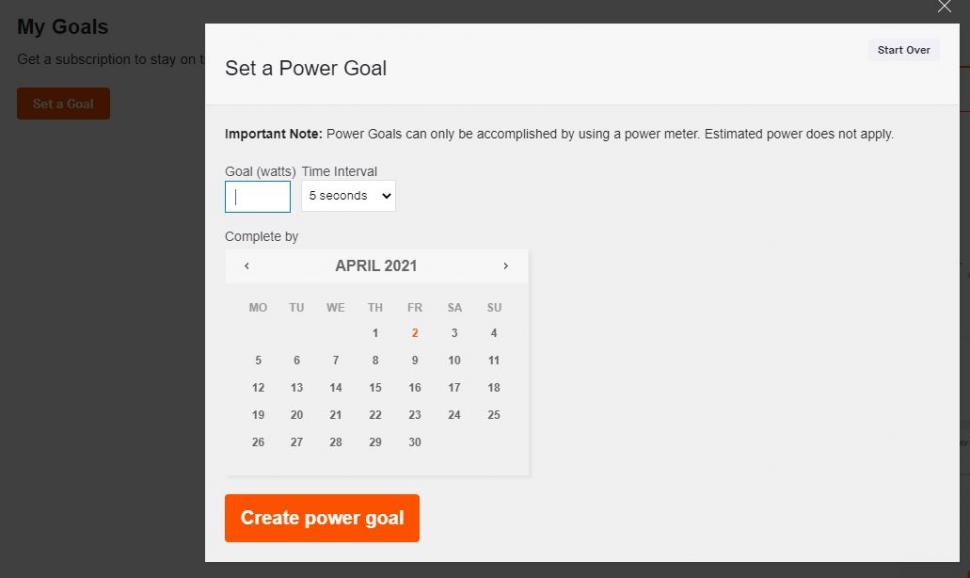
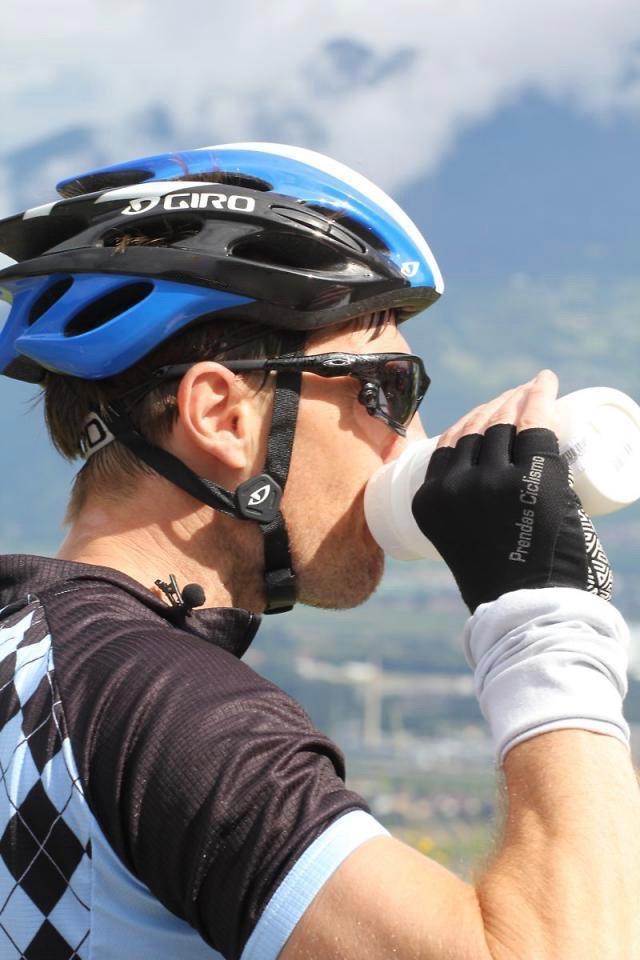
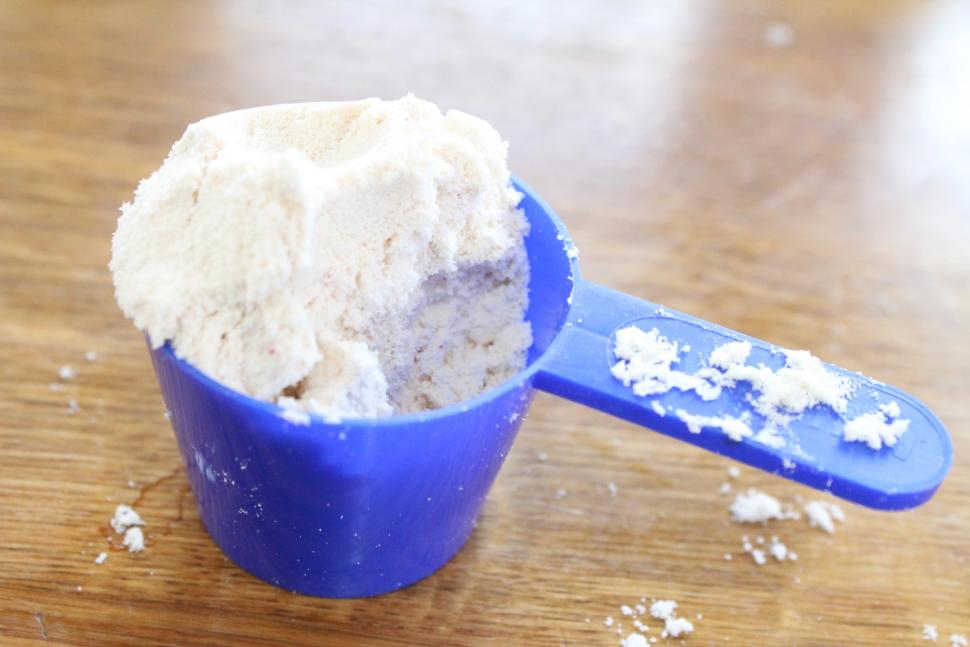

Add new comment
28 comments
I discovered cycling in my 30s but thanks to the pandemic forcing the acquisition of a turbo trainer and prompting the acquistion of a gravel bike, I feel I have done more of it in the first year of my 40s than I did previously. Several members of my Zwift racing team are also over 40 and it's been a joy to collectively share our love for cycling and growing fitness from racing with them. As with many things, the more you do the easier it is ... I am getting more neck and shoulder pain these days though and it may be time for another bike fit to reflect advancing years!
Supplements can support knees- Glucosamine, MSM and Chondroitin worked very well for me.
I'd add: cycle to work. You'll eventually get your position dialled in perfectly because you can test out small changes with quick feedback. Your bike handling skills will improve hugely and it will build your strength, fitness and you'll get used to cycling in every type of weather. Then if you fancy a lie in on a Sunday morning you will still have done a base level of miles done for the week and won't have to feel guilty.
This last year has undermined all my cycling fitness. If I cycle to work, the hardest bit is bunny-hopping up the front doorstep; the ride to the dining room and the laptop is traffic-free but brief.
I still get grief from passers-by, though...
"Your dropping oil and muck on the carpet!"
"No you're dropping oil and muck on the carpet!"
"No I'm not, you are!"
"That's better."
All the fight has gone out of my commute. All I have left is the chance to undermine the grammar of my own text.
This is spot on - no easier way to get your mileage up than a reasonable distance commute. As GMBasix says, it's been much harder since the pandemic to keep fitness up.
The so-called "compact crankset" is poorly suited to middle aged people in areas with hills and mountains. The top gear is pretty much not needed, while lover gears are.
46-30 should be standard or even 46-28. That way people can use normal cassetts and dont need longer cage derailluers
Er speak for yourself
Yes- it's taken you quite a while to spot this but that's what we do on here.
Crikey Nigel you are the one talking cobblers here!
A 52/36 with an 11/28 cassette is feeble, and I suggest you invest in an ebike with that level of fitness.
I, like all the proper cyclists on road.cc, just take my track bike out when I hit the hills.
A 60/12 is all anyone should need and will also let you get up sufficient speed on the descents.
Oh I think we know it was; you do love to burnish your "As a cyclist myself" credentials, presumably to validate the supercilious spite you exhibit against cyclists elsewhere.
Specialized Tarmac 11-30, BMC Roadmachine 11-32, Trek Domane 11-34, Giant Propel 11-30, Pinarello Dogma 11-30, Colnago C64 11-30...several of these have 50/34 front rings as well.
52/11 and 50/11 will max out within 2-3 kph of each other at around 65 kph, a margin that doesn't matter to anyone but racers. Stop posturing.
Yes odd I didn't see it before - was it from when you left never to come back, or when you started posting under a different name, or around the time of your ban?
Don't worry though, I'm sure no one here thought you were trying to show off.
Nigel even speaks for ToP lAwYer NiCk FrEeMaN
I turn 50 next week and use a 46/30. I can spin enough that I'm still applying power at 35 MPH on a long downhill, if I want to. At that point, though, it's nearly as fast, sometimes faster, to get in the drops, put the feet at 3:00 and 9:00, and stop pedalling.
I'm with Nige. I'm 62, and live in the Vaucluse, where 7 or 8km uphill at 5 to 10% followed by 7 or 8km downhill at the same gradient happens on every ride. I recently made the huge mistake of going from a 52/36 to 50/34, a move I will reverse at the first opportunity. 50 front 11 rear is just not high enough for those long descents. I can quite understand why commuters in the South of England might not use an 11 much, but riding proper hills, gear range is everything. (As for 46/11 at 35mph and "still applying power"? That's a very inefficient cadence of 107. Good luck with that! )
Eh?
52x11 at 100rpm is 37 mph
50x11 at 100 rpm is 35 mph according to Sheldon.
I think the benefits you are touting are more psychological than physical.
And since aerodynamics dominates at those speeds you'll probably be better off with some aero bars or a tuck session.
I'm not sure what point you are making, particularly as you have mischievously, selectively quoted a comment I made about the necessity or otherwise for an 11 tooth cog, and applied it to a passing comment I made in that post about preferring a 52 ring to a 50. Not cool! Few oldies will maintain 107 rpm down an 8km descent (unlike the poster above who claims he can). I am quite happy climbing Ventoux, or Galibier, or La Bonette, on a 36/28, but like most people my age, I can't deliver power above 90rpm, simple as. I read somewhere that this is neurological rather than muscular, with the body becoming less effective at coordinating muscle groups as we age. The difference between 52 and 50 may well be only 4%, but it is very noticeable, and it has nothing to do with spinning at 100rpm. Maybe you should try telling those who want to go from a 30 to a 32 that its all psycholgical, it's only 6% after all! As for the actual subject of my post, yes riding in the mountains, which I do almost daily, an 11 tooth cog is a benefit, and I use mine more than my now lowest 30.
I use the 50-11 quite a lot, even being old and weak, mainly because my preferred cadence has dropped to below 70. But I find a 48-32-24 triple chainring works better in the mountains, especially with long passes over 20%. Using a long cage derailleur is not an issue.
I'm over 60 and still ride 36x52 with a 11-28 cassette and I live and ride in the Peak District with 7000m of climbing a week a regular occurence. For most who are new to cycling and not such a hilly area, then a standard compact of 34x50 should be fine unless extremely unfit or with a disability perhaps.
This discussion (about gearing) comes round periodically and I'm always baffled by it. Here's why:
TT-ing and racing are different cases, but I've managed a 66 minute (flat) 25 riding my standard road bike (50/34, 11-30). No, that's not quick by tt-ing standards (c.23mph/37kph average), but it's not bad on a standard road bike. Normally, I'll average c.17-18mph/27-29kph on long/hilly rides, and living in the Chilterns I wouldn't want a higher bottom gear than 34-30. I'm not a heavy rider.
With that in mind, I'm always curious who all these people are who ride bikes day-to-day with 52/36 and 11-28 (and they're always in hilly areas, too). I presume they're all hammering round everywhere at 25mph average? And why aren't they dominating local races and TTs?
Because TTs are 'dangerous'
Well the Audi ones are
Indeed. Asuming a relatively comfortable 90 rpm cadence, the 50x14 would have you doing 40kmh, with three more gears to go on a typical 11-25.
I'm still not seeing why that ride merits a 52/36 and an 11-28.
At a max speed of 38mph, that's 105rpm in a 50/11 with 25c tyres, assuming you're going for it. 105rpm is a fast cadence, but it's not excessive. You're also starting to reach a speed whereby aerodynamics is by far and away the most important thing; you'd lose barely any speed by tucking and picking a line carefully.
Meanwhile, 36/28 is going to be hard work if you hit any really serious hills, unless you have proper decent watts - there's a reason the pros run generally run a 30 or 32 largest sprocket in the mountains. Wiggins had to get off up The Struggle in the Tour of Britain when his mechanic (supposedly) forgot to change his 11-25 cassette.
If you live somewhere flat or just a bit lumpy, that's fine, but it does pose a problem (or an expense) if you want to take your bike to the Alps, Dolomites (or just the Lake District).
I'm still of the view that no-one who isn't well north of 4.5w/kg actually needs a 52/36 for day to day riding, but then again, it's no skin off my nose what someone else rides.
Quite, there's nothing there that couldn't be achieved with a 50/34 11/32, it proves the square root of precisely bugger all. It's part of our Nige's charm [sic] offensive after his ban for abuse to make out he's a "proper" cyclist (other highlights have included posting pictures of his bike to convince us he has a bike, posting screenshots of his Strava to convince us he rides it, calling Leith Hill "a slight incline", sneering at people (me!) when they say one of their four bikes is an ebike and so forth - here's a tip Nige, "proper" cyclists don't give a damn what other people do on bikes or look down on them for it) - look he sustained under 20mph for a whole hour! Bit sad really.
Just ignore him. Now he is back to the old username, fewer people will be caught out. Post ban, he will just snipe away at you just shy of the line.
Surely 2 bolt cleats are, at the very least, ample for anyone starting out or returning? Otherwise, lots of sense here (wisdom of crowds) - and plenty to think about even a couple of years into my own return. Thank you for putting this together.
Yup thanks for putting this together. I think I asked for an article similar to this on the previous "staying fit" at 40+ article.
On the topic of cleat bolts I would say go with what works, and that should be influenced by a) the number of mid-ride cafe stops or commutes and b) whether you also have an MTB/Graveler in the shed.
If either of those register highly and you're disinclined to spend 2x£150 on seperate sets of pedals, cleats and shoes, I would go 2 bolt / spd.
Thanks for comments and suggestions here. We have edited to acknowledge that two bolt cleats are a great option for those starting out.
Can also confirm that we did squirrel away the idea of a follow-up feature based on suggestions from the first fit over 40 feature published earlier this month - cheers and hope you find this one useful too!
Very much did. Thanks again Jack and Anna!